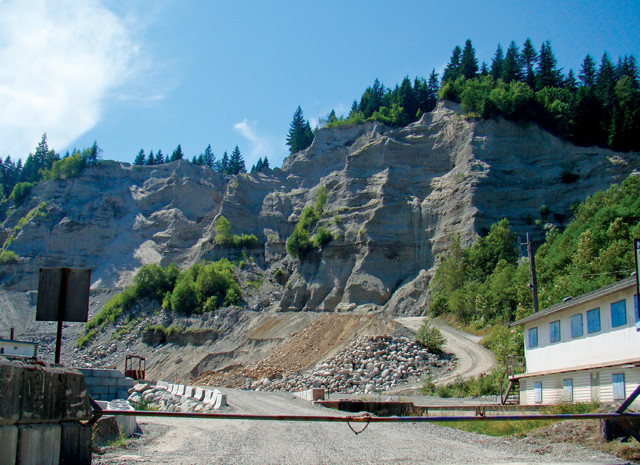
by Michael C. Wilson and Lionel E. Jackson Jr. Monday, February 8, 2016

Gravel pits (the wall here is 100 meters tall) on the Coquitlam River in Coquitlam in Metro Vancouver. This important geological exposure of alluvium and glacial tills comprises a nonglacial-to-glacial cycle and is a scientifically important reference section. Its continued existence is threatened by encroaching development and varied public concerns. Complex and often conflicting concerns are typical for urban geological sites. Credit: Michael Wilson.
It might surprise people to learn that some type sections can be found in cities. Type sites require conservation and protection. An example from the Vancouver metro area in British Columbia is a series of gravel pits along the Coquitlam River that are the type section for deposits associated with the Coquitlam glacial stade. The pits, which we visited as part of our field trip at the Geological Society of America meeting in Vancouver in 2014, have been a focus of public concern over issues ranging from aesthetics to the delivery of sediment to a nearby salmon stream; yet they have also been of vital economic importance in supplying raw material to a growing metropolis.
Reclamation of the pits would obliterate an important reference geological section. Unfortunately for science, whether through mining or reclamation, these deposits will ultimately be lost for study, as often occurs in urban settings. Temporary exposures can be of great value, but they require rapid responses to study and sample them while they are available.
© 2008-2021. All rights reserved. Any copying, redistribution or retransmission of any of the contents of this service without the expressed written permission of the American Geosciences Institute is expressly prohibited. Click here for all copyright requests.